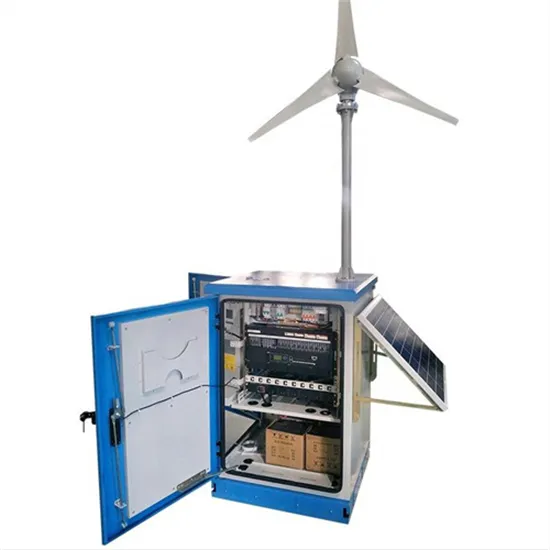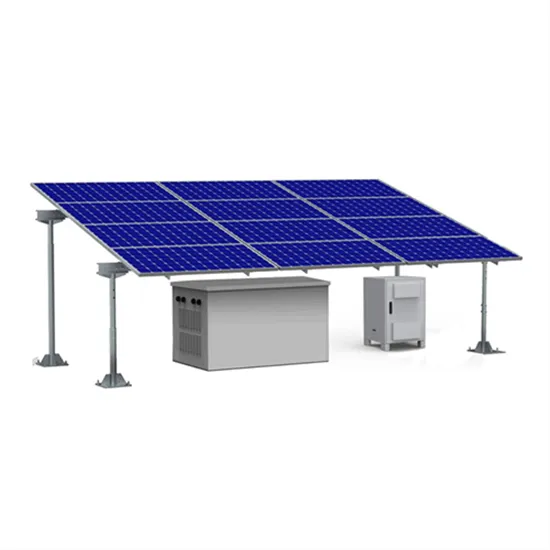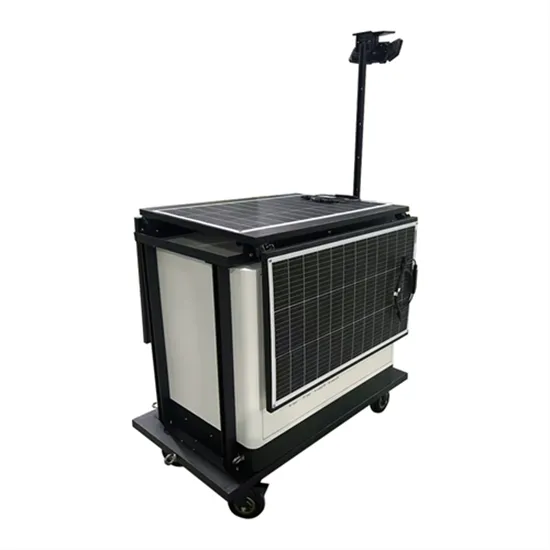The proportion of photovoltaic power generation consumed by communication base stations
Welcome to our dedicated page for The proportion of photovoltaic power generation consumed by communication base stations! Here, we have carefully selected a range of videos and relevant information about The proportion of photovoltaic power generation consumed by communication base stations, tailored to meet your interests and needs. Our services include high-quality home solar systems, photovoltaic panels, and advanced inverters, designed to serve a global audience across diverse regions.
We proudly serve a global community of customers, with a strong presence in over 20 countries worldwide—including but not limited to the United States, Canada, Mexico, Brazil, the United Kingdom, France, Germany, Italy, Spain, the Netherlands, Australia, India, Japan, South Korea, China, Russia, South Africa, Egypt, Turkey, and Saudi Arabia.
Wherever you are, we're here to provide you with reliable content and services related to The proportion of photovoltaic power generation consumed by communication base stations, including cutting-edge home solar systems, advanced photovoltaic panels, and tailored solar energy solutions for a variety of applications. Whether you're looking for residential rooftop installations, commercial solar projects, or off-grid power solutions, we have a solution for every need. Explore and discover what we have to offer!

Optimal configuration for photovoltaic storage system capacity in
To ensure the stable operation of 5G base stations, communication operators generally configure backup power supplies for macro base stations and approximately 70% of
WhatsApp Chat
Multi-objective cooperative optimization of communication
Recently, 5G communication base stations have steadily evolved into a key developing load in the distribution network. During the operation process, scienti c dispatch-fi ing and management of
WhatsApp Chat
Optimum Sizing of Photovoltaic and Energy Storage Systems for
Renewable energy sources are a promising solution to power base stations in a self-sufficient and cost-effective manner. This paper presents an optimal method for designing a photovoltaic
WhatsApp Chat
Multi‐objective interval planning for 5G base station virtual power
First, on the basis of in-depth analysis of the operating characteristics and communication load transmission characteristics of the base station, a 5G base station of
WhatsApp Chat
The Research and Perspective on Photovoltaic Development in
The third is to rely on existing river basins, further refine the project construction plan, strengthen the research on the proportion of wind and photovoltaic and hydropower
WhatsApp Chat
Optimal capacity planning and operation of shared
A bi-level optimization framework of capacity planning and operation costs of shared energy storage system and large-scale integrated 5G base stations is proposed to
WhatsApp Chat
2022 Share of Electricity from Renewable Energy
In order to evaluate how much renewable energy is being introduced in Japan, the latest data up to the end of FY2022 on the share of
WhatsApp Chat
Analysis Of Telecom Base Stations Powered By Solar Energy
In this paper, the importance of solar energy as a renewable energy source for cellular base stations is analyzed. Also, simulation software PVSYST6.0.7 is used to obtain an
WhatsApp Chat
Power consumption based on 5G communication
Abstract: At present, 5G mobile traffic base stations in energy consumption accounted for 60% ~ 80%, compared with 4G energy consumption increased three times. In the future, high-density
WhatsApp Chat
Improved Model of Base Station Power System for the
The widespread installation of 5G base stations has caused a notable surge in energy consumption, and a situation that conflicts with the
WhatsApp Chat
Electricity in the U.S.
Solar photovoltaic and solar thermal power plants provided about 4% of total U.S. utility-scale electricity and accounted for 18% of utility-scale electricity generation from
WhatsApp Chat
Solar Power and the Electric Grid, Energy Analysis (Fact Sheet)
Solar Power and the Electric Grid In today''s electricity generation system, diferent resources make diferent contributions to the electricity grid. This fact sheet illustrates the roles of
WhatsApp Chat
Photovoltaic Power Supply System for
Considering the advantages of photovoltaic power generation, we introduce photovoltaic power generation systems into the field of communication base
WhatsApp Chat
How Solar Energy Systems are Revolutionizing Communication
Energy consumption is a big issue in the operation of communication base stations, especially in remote areas that are difficult to connect with the traditional power grid,
WhatsApp Chat
Analysis Of Telecom Base Stations Powered By Solar Energy
r in the Nigerian telecommunication industry. In this paper, the importance of solar energy as a renewable energy source for cellular ba. e stations is analyzed. Also, simulation software
WhatsApp Chat
How Solar Energy Systems are Revolutionizing Communication Base Stations?
Energy consumption is a big issue in the operation of communication base stations, especially in remote areas that are difficult to connect with the traditional power grid,
WhatsApp Chat
How to make better use of intermittent and variable energy? A
China has become the world''s largest clean energy country in terms of the total installation of wind and photovoltaic power and annual newly installed capacity. However,
WhatsApp Chat
Telecom Base Station PV Power Generation System Solution
The communication base station installs solar panels outdoors, and adds MPPT solar controllers and other equipment in the computer room. The power generated by solar energy is used by
WhatsApp Chat
Power Consumption Modeling of 5G Multi-Carrier Base
However, there is still a need to understand the power consumption behavior of state-of-the-art base station architectures, such as multi-carrier active antenna units (AAUs), as well as the
WhatsApp Chat
Solar photovoltaics in Europe
The production volume of electricity from solar photovoltaic power in the European Union has been steadily increasing in the last years. In 2024, the EU''s solar PV power
WhatsApp Chat
Low-carbon upgrading to China''s communications base stations
Traditionally powered by coal-dominated grid electricity, these stations contribute significantly to operational costs and air pollution. This study offers a comprehensive roadmap
WhatsApp Chat
2023 Total System Electric Generation
The Year in Review Total system electric generation is the sum of all utility-scale in-state generation plus net electricity imports. In 2023, total generation for California was 281,140
WhatsApp Chat
(PDF) High Proportion of Distributed PV Reliability Planning
Abstract The higher proportion of distributed photovoltaic and lower fossil energy integrated into the power network brings huge challenges in power supply reliability and planning.
WhatsApp Chat
Distributed solar photovoltaic development potential and a
The solar power cumulative capacity will reach at least 600 GW by 2030, 1000 GW by 2040, and up to 1500 GW by 2060, indicating that solar PV would contribute almost one
WhatsApp ChatFAQs 6
Can distributed photovoltaics promote the construction of a zero-carbon network?
The deployment of distributed photovoltaics in the base station can effectively promote the construction of a zero-carbon network by the base station operators. Table 3. Comparison of the 5G base station micro-network operation results in different scenarios.
Why do base station operators use distributed photovoltaics?
Base station operators deploy a large number of distributed photovoltaics to solve the problems of high energy consumption and high electricity costs of 5G base stations.
Can distributed photovoltaic systems optimize energy management in 5G base stations?
This paper explores the integration of distributed photovoltaic (PV) systems and energy storage solutions to optimize energy management in 5G base stations. By utilizing IoT characteristics, we propose a dual-layer modeling algorithm that maximizes carbon efficiency and return on investment while ensuring service quality.
What happens if a base station does not deploy photovoltaics?
When the base station operator does not invest in the deployment of photovoltaics, the cost comes from the investment in backup energy storage, operation and maintenance, and load power consumption. Energy storage does not participate in grid interaction, and there is no peak-shaving or valley-filling effect.
Do 5G base stations use intelligent photovoltaic storage systems?
Therefore, 5G macro and micro base stations use intelligent photovoltaic storage systems to form a source-load-storage integrated microgrid, which is an effective solution to the energy consumption problem of 5G base stations and promotes energy transformation.
Can a bi-level model optimize photovoltaic capacity and battery storage capacity?
Energy efficiency and cost-effectiveness are two core considerations in the design and planning of modern communication networks. This research proposes a bi-level model algorithm (see Fig. 1) to optimize the photovoltaic capacity and battery storage capacity of hybrid energy supply base stations.
Related reading topics
- Japan produces photovoltaic modules and panels
- Afghanistan Wind and Solar Storage
- Estonia Wind-Solar Hybrid Power Generation System Plant
- Panama Solar Power Plant System
- Solar Panel Curtain Wall Building
- How is the market price of communication base station batteries
- Brazil off-grid inverter prices
- Congo Kinshasa communication base station energy storage system bidding
- Kazakhstan Independent Energy Storage Project
- Myanmar 72V 100A Huijue lithium battery pack
- Senegal energy storage cabinet battery integration system
- Large power supply outdoor power supply 10kWh
- Where is the outdoor power supply factory in Papua New Guinea
- Portugal s largest battery energy storage company
- Liquid-cooled energy storage system photovoltaic power supply
- East Africa Outdoor Power Supply
- Energy Storage Industry System

